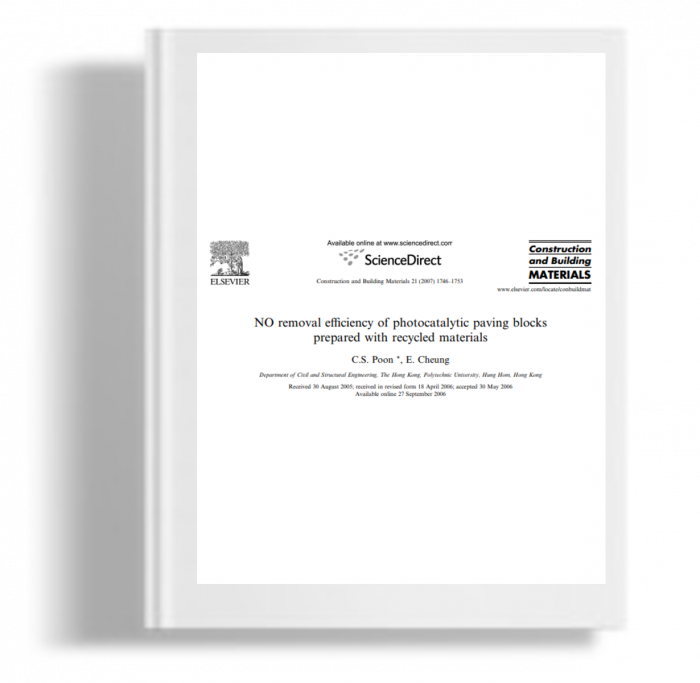Kami menggunakan cookies untuk membuat pengalaman Anda lebih baik. Untuk mematuhi petunjuk e-Pribadi yang baru, kami perlu meminta persetujuan Anda untuk menyetel cookies. Pelajari lebih lanjut .
No removal efficiency of photocatalytic paving blocks prepared with recycled materials
This paper presents the results of a study on the effectiveness of incorporating air cleaning agents such as titanium dioxide (TiO2) into the technique of producing concrete paving blocks, using local waste materials to remove nitrous oxide (NO). Factors which would affect the performance of the blocks were studied including the porosity of blocks, the type of waste materials used within the mix design, the types and percentage of TiO2 added within the mix design. The results show that the photodegradation of NO is related to the porosity of the blocks. When the porosity of the block was increased so was the NO removal ability. Hence the choice, size and content of aggregate material used in the mix design are important. In addition, crushed recycled glass cullet was used to place part of the aggregates in the blocks and was found to benefit the NO removal ability due to its light transmitting characteristic. Three types of TiO2 were tested in this study and their influence on NO removal was quantified. Based on the experimental results, an optimum mix design was selected which incorporates recycled glass, sand, cement and TiO2.
This paper presents the results of a study on the effectiveness of incorporating air cleaning agents such as titanium dioxide (TiO2) into the technique of producing concrete paving blocks, using local waste materials to remove nitrous oxide (NO). Factors which would affect the performance of the blocks were studied including the porosity of blocks, the type of waste materials used within the mix design, the types and percentage of TiO2 added within the mix design. The results show that the photodegradation of NO is related to the porosity of the blocks. When the porosity of the block was increased so was the NO removal ability. Hence the choice, size and content of aggregate material used in the mix design are important. In addition, crushed recycled glass cullet was used to place part of the aggregates in the blocks and was found to benefit the NO removal ability due to its light transmitting characteristic. Three types of TiO2 were tested in this study and their influence on NO removal was quantified. Based on the experimental results, an optimum mix design was selected which incorporates recycled glass, sand, cement and TiO2.

